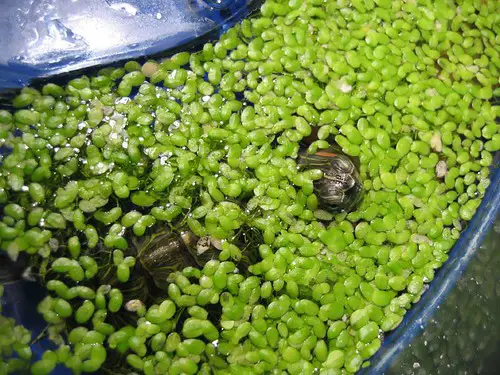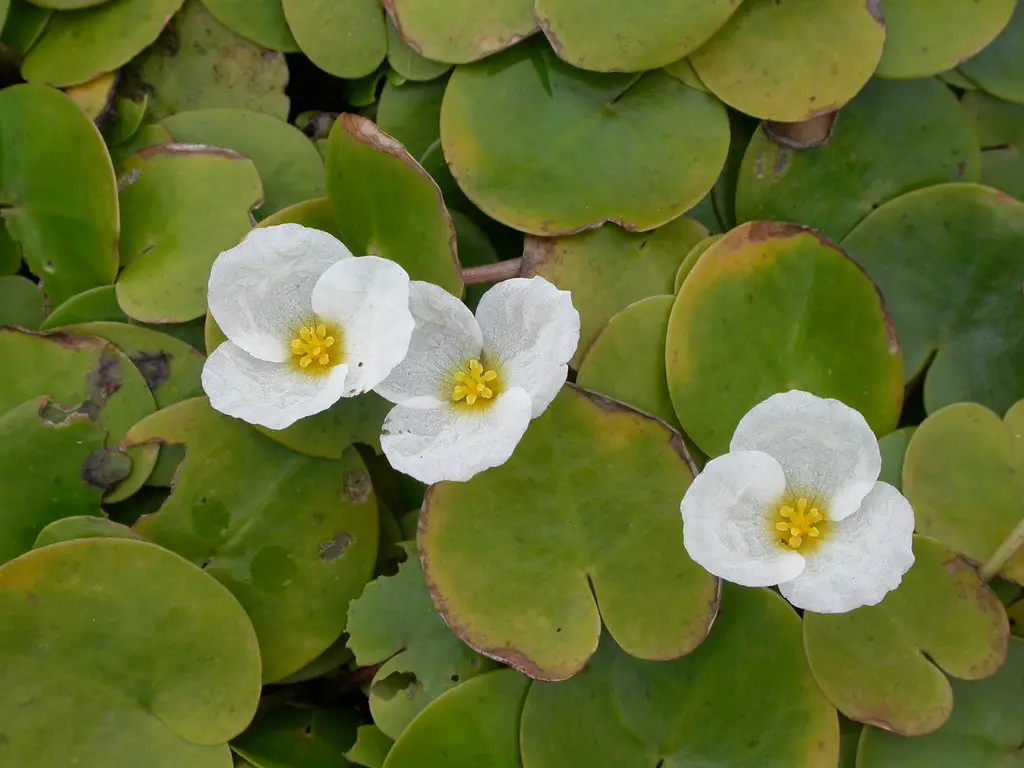Frogbit vs Duckweed: What Is The Difference? Frogbit and Duckweed are both aquatic plants that can help you attract animals into your garden. They have a very similar appearance, so are they the same plant just with a different name?
Both Duckweed and Frogbit are floating aquatic plants that spread quickly within waterways and are considered invasive species. The key difference is that the frogbit has heart-shaped leaves, white flowers, and roots. Whereas Duckweed does not have roots or flowers but instead has stems that contain many small air bubbles allowing the plant to float at or near the surface of the waterway.
The plants are not closely related to each other, however, despite the fact that they are not closely related that have a similar smothering effect to other plants and animals within the waterway. Both plants tend to out-compete other native species over time and choke the waterways.
As such it is advisable to remove the plants for places like your home ponds. However, when doing so it is important to dispose of the plants carefully to avoid contributing to the spread of them. This means bagging up the plants into plastic bags to putting them into general waste rather than composting them or simply leaving them on the side of the pond.
About Duckweed
The term duckweed refers to the subfamily Lemnoideae which are a group of flowering aquatic plants. These plants are sometimes also referred to as seer’s-worts, water lentils, or water lenses and float on or just beneath the surface of still or slow-moving bodies of water.
It is typically found at the edges of lakes ponds and slow-running rivers. The plants thrive in warm water and may be found in Europe and Asia, Australia, Africa, New Zealand, North and South America.
The family of duckweeds has about 35 different species in 4 distinct genera. These have fast-growing rates that can grow up to their maximum size in a matter of days after 2 or 3 consistent days. Due to night growth equaling or exceeding day growth, they are known to grow extremely quickly. An example of one species is shown in the image below.

Duckweed is able to grow at temperatures as low as 1 to 2°C (34 to 35°F) and it is capable of surviving a light frost. However, the growth of duckweed is fastest between 20 and 30°C (68 to 86°F).
Due to their rapid growth rate and wide tolerance of pH, duckweed is capable of growing in pH range of 3 to 10, duckweed is used for extracting nutrients from wastewater.
The plants themselves have a simple structure and do not have any leaves of stems. The plant instead has a small frond-like structure that is relatively thin, typically only a few cells wide. Within these structures are air pockets which are also known as aerenchyma.
These air pockets allow the plant to float at or most commonly just below the surface of the water. However, the problem with duckweed in a pond containing other plants and fish is that it has the capacity to cover the entire surface of the whole pond leaving little oxygen and light. As a result of this, it is essential to regularly remove duckweed from the pond.
About Frogbit
The European frogbit as the name suggests is a species that originated in Europe and belongs to the Hydrocharitaceae family. It is a perennial free-floating aquatic plant with heart-shaped leaves that have a leather-like texture. The European frogbit is found in locations where the water is still such as backwaters, beaver dams, shallow ponds, and also sheltered locations in lakes and rivers.
European frogbit was first introduced to Canada in 1932 at the Ottawa botanic garden. However, after a period of seven years, it was found in the nearby Rideau Canal. The species then spread into the Ottawa and the St. Lawrence Rivers before making its way into the US sometime later.
European frogbit is a herbaceous aquatic plant that produces small white flowers periodically however, the plant’s primary reproduction method is not seeds. The plant instead reproduces via the production of stolon buds and turions.
Turions are small shoots that form on the underside of the leaves and detach in autumn and sink to the bottom of the waterway. They stay there through the winter before emerging in the spring to create a new plant. Each plant can produce 100 of more turions in a single season which enables the plant to spread quickly.

This spread is further aided by the fact that turions are sometimes transported to different locations by species such as waterfowl and currents within the waterway. Germination of the turion will occur once the temperature is above 10°C (50°F) for a period of 2 weeks or more.
Once the European frogbit takes over an area it will create a dense mat leaves and roots that prevents light from penetrating the water. This results in native vegetation being shaded out reducing growth and water flow. This limits the amount of nutrients and dissolved oxygen which also impacts the native fish population.
Relevant Articles
how to prevent weeds from growing
12 Tips To Boost Your Garden Output
10 Ways To Make Your Vegetable Garden Look Beautiful
7 Easy Steps To Creating An Orchard In Your Own Yard
